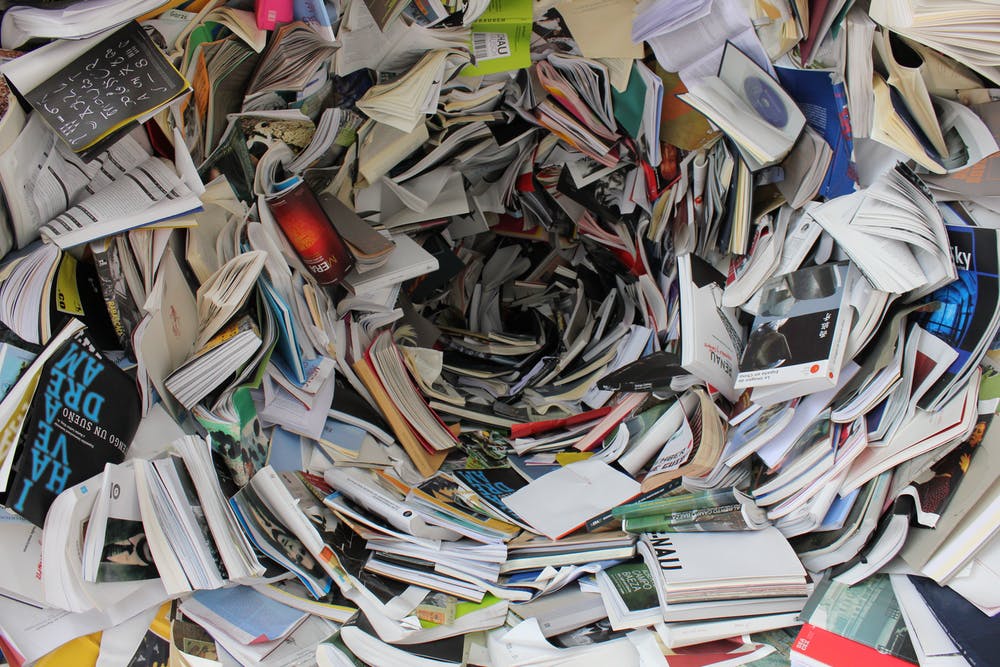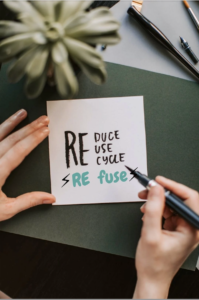Recycling in America and How to Recycle Right
Wish-cycling is the practice of recycling items or materials that cannot be recycled. While this term may be new to you, it happens far more often than you think. It stems from the best intentions – wanting to recycle that plastic bag that you had to buy because you forgot your canvas tote at home or recycling the pizza box from last night because, after all, it’s paper right?
The most common wish-cycled items are usually things you would expect can be recycled, such as paper receipts, Styrofoam cups and plastic bags. However, given different districts have their own rules and available equipment, good intentions often end up costing recycling companies more time and money – or worst yet, impacting the recycling process further down the line.
Recycling is up to us now
Recycling in the US is broken. This is partly due to the cost of recycling but also the lack of infrastructure. For decades, the country relied on China to handle its recycling needs. Tons and tons of recyclables were shipped overseas and made into goods such as shoes, bags and new plastic products. In 2016, the US exported a whopping 16 million tons of plastic, paper and metals to China.
In 2018, however, China decided to ban the imports of most recyclables, including mixed paper and most plastics. This left towns and cities across the country lost and, with little infrastructure to get the job done, with a tough choice to make; pay high rates to get rid of recyclables or throw them away. To give you an idea of how much we’re talking about, in 2015, the U.S. generated 262.4 million tons of waste – that’s nearly 5 pounds per person per day!
Why is recycling so hard?
While many Americans dutifully put their items into recycling bins, most of it doesn’t actually end up getting recycled. This is partly due to contamination. This occurs when recyclables are either dirty, damaged or mixed with other materials and is a problem exacerbated by the introduction of single-stream recycling. This is when multiple recyclables can be placed in a single bin – which definitely makes it easier for the consumer (and therefore more likely for people to recycle) but makes products almost impossible to recycle.
According to the National Waste & Recycling Association, about one quarter of materials placed in the blue bins are contaminated. For decades, people have been throwing away pretty much everything into recycling bins – like pizza boxes, ketchup bottles, yogurt containers, the list goes on. Now that wasn’t a problem because these bins were sent to China, where workers physically sorted through them and cleaned it all up. In the U.S. however, paying people for all those hours spent sorting is much more expensive than using virgin plastics and paper. And so the waste wheel keeps turning.
“The simple fact is, there is just too much plastic—and too many different types of plastics being produced; and there exist few, if any, viable end markets for the material.” – CEO of Recology
A Greenpeace report recently found that PET (#1) and HDPE (#2) bottles are the only types of plastic that are actually recyclable in the US today – and only 21% of those collected are actually made into recycled materials due to contamination! Textiles are another huge source of waste – with only 15.2% of textiles getting recycled in the US in 2017.
4 Tips to Recycle Right
 1. Clean out your recyclables
1. Clean out your recyclables
Imagine you have a peanut butter jar. It’s made of recyclable plastic, so you scoop out that last spoonful and do your due diligence by putting it in that blue bin. In order for it to actually be recycled, you need to add a step to that – clean it out. Recyclables have to be cleaned of stuck-on foods in order for them to be successfully recycled (or not contaminate other products if accidentally processed through the plant). Malting down plastic requires scorching temperatures, which, if there is food left on the plastic, will char that too. If so, that burned food (which can hold toxins) would contaminate the recycled plastic product. This is easily avoided with a quick scrub before you toss.
2. Buy recycled products & stop using disposables
When shopping, keep an eye out for bottles and cans made from recycled plastics or glass. This supports brands that are repurposing recycled materials and can disincentivize others from purchasing virgin materials. Virgin materials apply particularly to disposable products – such as cups, straws and cutlery. These are very hard to recycle and therefore end up in landfills. Unnecessarily. By cutting out disposables from your day-to-day, tons of waste can be spared from contaminating the earth. A very easy way to start could be a reusable cutlery set. There are plenty of brands out there making sets to choose from. For some inspiration, check out: Patagonia, New Zero Co., and Package Free Shop.
3. Bring reusable containers & shop in bulk
Reusable travel mugs, water bottles, and much more are great substitutes for disposables – that often lead to tons of waste in landfills. Not to mention, in many stores, discounts are applied to shoppers that bring in their own coffee cups or containers! When shopping, bringing reusable bags and containers is also a great way to avoid recycling (or lack thereof) mishaps.
Did you know you can also bring boxes or crates (of milk or vegetables, for example) back to the store once you’ve loaded up the loose items in your car? Buying in bulk is a great way to save (on money and waste). Spices, nuts, grains, beans, pretty much anything can be bought in bulk and purchased in your own container. This also eliminates the millions of tons of packaging waste that ends up in landfills yearly.
4. Look for alternatives
Different districts accept different recyclables. This can be really confusing, but don’t give up hope, look for an alternative! For example, they may not accept car batteries, but an auto parts store might. A great directory to help you uncover the best places to bring recyclables in Recycle Nation. Just choose your item from the list, enter your zip code and get directions to the closest drop off point. Composting can also be a good alternative for things like pizza boxes, that you may not find a recycling alternative for. Let nature break it down and add nutrients to soil. For those living in city apartments, try turning to local organizations for help composting like Grow NYC, Big Reuse, and LES Ecology Center.
Recycling has become a real problem. There is too much waste to handle and we are still missing a cost-effective way to repurpose materials in a circular way. As such, the easiest way to fix out recycling problem is to buy more mindfully. This can mean:
Buying less: Try to avoid those impulse buys that you leave sitting in your closet collecting dust and eventually toss out of clutter frustration.
Buying better: Look for products that are recycled, sourced from natural materials or compostable.
Buying smarter: Bring your own containers, refuse the extra packaging by buying loose produce, shop locally, and embrace technology to reduce your shopping waste – like e.pop, which takes care of all your receipts for you so you never have to deal with a paper slip again!

Francesca Gobbetti
Community Manager at e.pop. Social and environmental awareness is what keeps Francesca up researching and writing the occasional blog after hours.



